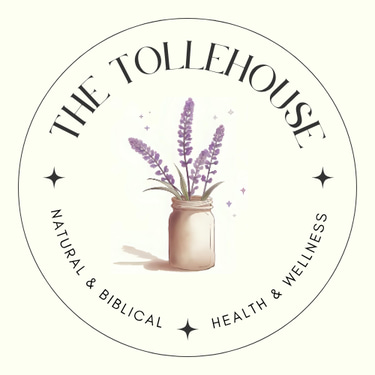

We've all been using the same common household products for a long time, even ones that we hail as staples in our homes. But are we exposing our bodies to toxins by using many of these convenient and colorful items?
Photo by Freepik
Soap
We wash our hair, our dishes, and even our dogs with soap. But did you know that the chemicals in soap dry out skin and can cause allergic reactions in some people? Many soaps such as Dawn dish soap contain surfactants, preservatives, foaming agents, and more, which can irritate skin, eyes, and even your lungs (Kitchen Journal). These harsh chemicals are made to strip grease and dirt from surfaces--and unfortunately, the grease on your skin isn't exempt from that. Our skin needs a healthy balance of oil secretions in order to stay moisturized, but the astringent properties found in soap disrupt that process by drying it out.
Being the largest organ and only external organ that is a part of our bodies, our skin is often the first line of defense in protecting our bodies against harmful bacteria, viruses, and more, and it accomplishes that through its oily secretions that serve as natural antibiotics (from Flora West on SlidePlayer). Disrupting that delicate, God-given process can mean an adverse reaction and a possible lowering of your immune system. All this from soap? Well, yeah. Let's look at the top three chemically-based ingredients you'll find in just about any store-bought, brand-name soap today.
Sodium Lauryl Sulfate (SLS)
Although a lot of skincare experts tout SLS as generally safe and effective in cleansing the skin, in a direct quote, SLS is "mainly used in toothpaste, shampoos, soaps, and facial cleansers but can also be found in skincare products such as moisturizers, hair gel, lip balm, and hair removal creams." (The Derm Review) Let's go back--how many of the products mentioned are you using regularly? Maybe a little bit is okay, but after several exposures per day, it must be enough to have some adverse effect even if we can't feel our bodies reacting.
Phthalates
Sound familiar? If you read 5 Easy Swaps to a Kitchen Detox, I touched on this ingredient there, too. That's because phthalates are also a key ingredient in plastic. In soap, it's not always easy to spot in the ingredients list because it is used for fragrance, which is what it is typically referred to on the back of the bottle. (Medical News Today). This might make soap smell nice, but it comes at the cost of hormone disruption, which can cause a cascade of other issues in the body such as reproductive harm, autoimmune diseases, and gut imbalance. And, as skin is highly absorbent, this definitely has the potential to pose problems over time.
Formaldehyde
When I think of formaldehyde, I remember the high school days of dissecting for science class. I remember how terrible the specimens smelled--because they were being preserved with formaldehyde! The smell was so strong, it would fill whatever room we were in. We had to preserve the specimens in the fridge, so we would clear out the bottom drawer and wrap those suckers in bag after bag, confining the pungent chemical smell (and the organ) to itself. Isn't it wonderful that that can be found in your soap, too? Formaldehyde is a known carcinogen, which means that it can cause cancer and gene mutation in our cells. It is also an eye and skin irritant, and can cause eczema. Although it has strong antibacterial properties, it might be chipping away at your health. A simpler soap can effectively clean bacteria and dirt off skin without the added chemicals.
A Great Alternative
Castile soap, made primarily with vegetable oil, alkaline, and essential oils, is gentle on the skin while bringing an exceptionally squeaky clean. Dr. Bronner's meets EWG's requirements for the listing of ingredients, so you know exactly what you're putting on your body. This soap may be a bit more expensive than traditional soaps, but your skin will thank you! Read more about castile soap here.
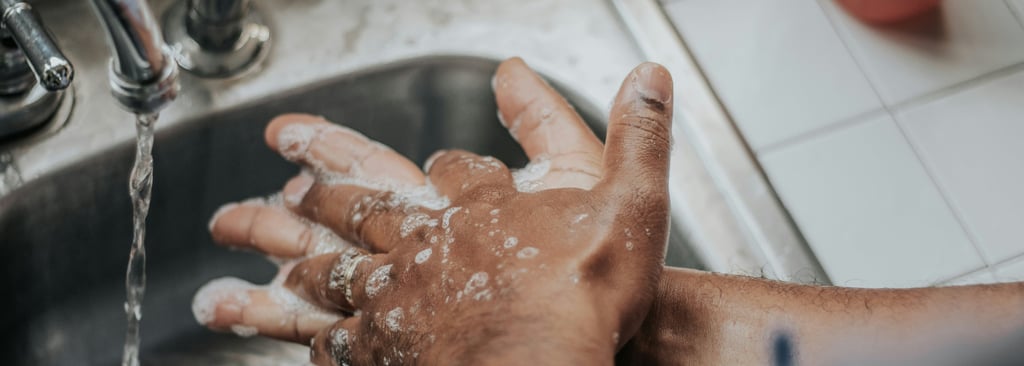

Photo by Mélissa Jeanty on Unsplash
Lotion
Now that your skin is dry from using all that soap, you reach for your lotion to help. But, what are you actually putting on your skin, and is it really helping?
Humectants are man-made, oily substances that draw water from the middle layer of the skin or the atmosphere to the outer layer of the skin. This includes hylauronic acid, which acts as artificial moisturizer that draws moisture to the skin in humid conditions. But in some people and in dry climates, it can actually contribute to dryness!
Other types of humectants like sorbitol (a sugar alcohol) and urea (a potent moisturizing agent) can cause skin irritation and even sensitivity to light. As a side note, despite the heavy opposition to it, we absolutely need sunlight in order to absorb Vitamin D, maintain hormonal balance, and so much more. If we are wearing lotion that makes us sensitive to sunlight, we are less likely to want to be out in it. And don't even get me started on what's in sunscreen. Especially if you have sensitive skin, swapping this common cosmetic is something worth considering.
A Great Alternative
Beef tallow is a simple moisturizer; it is just beef fat that has been rendered down to a pure state. If you search it up online, you may see a lot of whipped tallow products for skin, which just means that the beef tallow has been beaten to produce a lighter texture. Other great alternatives are olive oil and shea butter.
As with all natural products, you'll have to try it out and see if your skin likes it or not. These oils have been known to clog some people's pores. Personally, I have tried coconut oil on my face and hair, and it clogged my pores terribly (I had run out of tallow and didn't have any other options!). But I use beef tallow on my face daily, and I moisturize my hair with shea butter as needed with no issues. Here's the link to the beef tallow I moisturize (and cook) with.
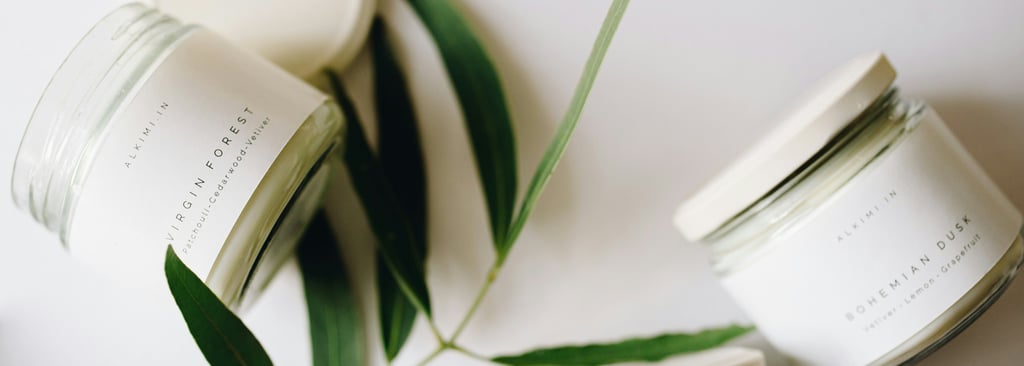

Photo by Mélissa Jeanty on Unsplash
Bleach
Although the process of bleaching has been around for over 5,000 years (beginning with the ever-so-innovative ancient Egyptians), the bleach we know today is fairly new to history, dating back to the middle of the last century, according to Owlcation. Although it works wonders on stained, dingy clothes, it works woes on the body. Like soap, bleach includes surfactants that enhance its cleaning quality, and it contains lye, which is caustic. These ingredients can contribute to asthma, skin irritation, and indoor air pollution when residues are left after cleaning.
A Great Alternative
Bleach is a great cleaner and whitener--but if you're looking to limit toxins in your home, vinegar is a worthy solution for cleaning dishes in the dishwasher, mopping the floors, scrubbing out that stubborn toilet ring, and more. You can add 1 cup of vinegar during the rinse cycle in your washer for the same whitening effects as bleach. And yes, vinegar stinks, but at least it is a much safer and cheaper alternative. (Note: not to worry; it won't leave your clothes smelling musty once the wash is over!) You can also pre-treat stained clothing with vinegar by rubbing it into the stain and letting it sit for at least 30 minutes before washing.
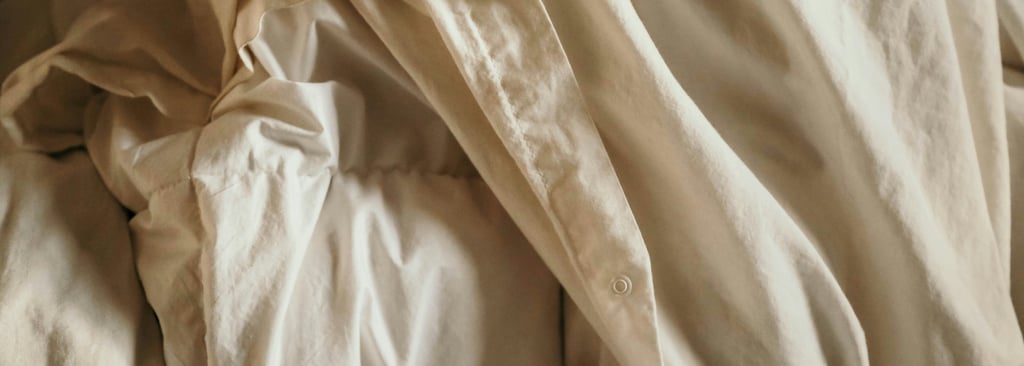

Photo by Skylar McKissack on Unsplash
Glass Cleaner
If you grew up like I did, everyone in the family had chores. One of my chores was cleaning the mirrors and glass tables. At the time, I used Windex, that unmistakable blue liquid that just smelled toxic. It made the glass in our house very shiny, but I simply hated that smell and how it made my nose itch!
In general, you'll find the following ingredients in any variety of glass cleaner: water, isopropyl alcohol, 2-hexoxyethanol (a glycol ether solvent), and ammonia. The Windex brand adds blue dye to that list to make their product more easily recognizable.
Only a few ingredients. Can't be that bad, right? Let's take a closer look.
Water
Gotcha! I'm pretty sure we all know this one. Let's dive into the next ingredient!
Isopropyl Alcohol
Although the name is often interchanged with rubbing alcohol, isopropyl alcohol is an undiluted antibacterial agent that can irritate the eyes and skin, and cause respiratory irritation if the fumes are inhaled. Technically, since there are other ingredients mixed in with this one, isopropyl alcohol probably isn't considered undiluted anymore, especially because water is the most abundant ingredient. If you're asthmatic or have any other respiratory issues, this one may cause some issues for you.
2-hexoxyethanol
Say that five times fast! This chemical solvent is used in a variety of products, but in household or industrial cleaners, it serves to break down grease and dirt. While this sounds great, consider some of the possible side effects according to Hazmap.com:
neurotoxicity
kidney and liver problems
reproductive harm
These effects may sound concerning, and at the same time feel like a small drop in a bucket; but the fact is, continued use of the same kinds of chemicals can definitely cause damage to your body over time, even if you feel just fine right now. God built our bodies to be very resilient, but in time they will break down, no thanks in part to the things we are using in, on, and around our bodies.
Ammonia
You may recognize this as an active ingredient in many glass cleaners. Ammonia is a chemical compound that is highly alkaline (great for disinfecting) but can be highly toxic (not great for your body). Ammonia is also used in fertilizers and even in industrial refrigeration. Ammonia as a household cleaner comes diluted, but doesn't come without possible side effects of heavy or long term use, which include eye problems, skin irritation, and respiratory issues. It is even linked to asthma and bronchitis, as pointed out by toxicgoods.com.
A Great Alternative
Vinegar is a very versatile and non-toxic cleaner. Simply mix a 1:1 ratio of vinegar to water in a spray bottle. You can use either apple cider vinegar or white vinegar. The choice is yours! It's a cheaper, safer way to make your glass and stainless steel shine. Vinegar is also great at disinfecting surfaces, so you can even use it to wipe down high-touch areas like countertops and door handles, too. Just steer clear of using it on certain surfaces.

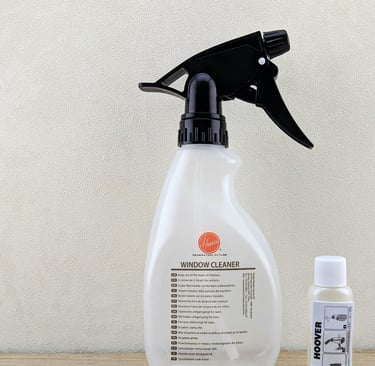
Photo by Element5 Digital on Unsplash


Photo by Element5 Digital on Unsplash
Nail Polish
Now let's shift from cleaners to cosmetics. There are a lot of ingredients in nail polish--so I'll save you the trouble of trying to sound out each syllable for each one. Nail polish is a colorful way to express your personality with different designs, nail lengths, shapes, and patterns. Even though it's a super fun way to accessorize your look, its ingredients are not so stylish. The goop inside those little glass bottles can contain formaldehyde, toluene, dibutyl phthalate, formaldehyde resin, and camphor, all skin-irritating and nail-destroying culprits.
A great statement from Harvard Health reads: "There is no strong research data regarding whether the chemicals excluded from non-toxic polishes have harmful health effects at the concentrations present in traditional nail polish." My problem with this statement is this: if there aren't enough studies done, there should be more! Universities and colleges could be among the first to conduct these studies because of their widespread research fields and the fresh knowledge of passionate students. We should make it an absolute priority to understand the effects that everyday products are having on our bodies for the short- and long-term. It makes me wonder if the companies that sell these health-wrecking products have something to do with that...
All conspiracy theories aside, every study is simply not being done, so use discretion when you're figuring out what you want to keep using and what you want to swap. we have already covered the adverse effects of formaldehyde. The other ingredients I listed aren't much better, having the potential to cause issues like inflammation, damage to nails and skin, fatigue, dizziness, cancer, and organ damage.
A Great Alternative
5-free, 7-free, or even 10-free nail polish is a good substitute. What does it mean? Here's an example of five-free: non-toxic nail polish will not contain formaldehyde, dibutyl phthalate, formaldehyde resin, toluene, or camphor. The 7- and 10-free varieties omit even more chemicals from their products. While I can't recommend a specific brand or product at this point, feel free check out Toxic Free Choice's recommendations. I like their review specifically because they recommend certain cleaner brands, but also explain what ingredients to look out for that still may be chemically-based, allergenic, or even toxic. I will say, they are on the pricey side, so if you really like nail polish, just go for it!
Shower Cleaner
Name-brand shower cleaners contain surfactants, preservatives, and fragrances, the fumes of which can contribute to respiratory issues, hormone disruption, and can even be carcinogenic. Chemical fragrances are largely responsible, with many of them being petroleum-based. But you wouldn't know that just by reading the ingredient called "fragrance." Check out what Scrubbing Bubbles' Daily Shower Cleaner's fragrances consist of: "2,6-dimethyl-7-octen-2-ol; 2-phenoxyethyl isobutyrate; 3,7-dimethyloct-6-enenitrile; 3a,4,5,6,7,7a-hexahydro-4,7-methanoinden-6-yl acetate; citronellol*; cyclamen aldehyde*; dipropylene glycol; ethylene brassylate; geraniol*; methyldihydrojasmonate."
If you're a chemist, great! You probably read that like it's a children's chapter book. But if you're not (like me), I'll make it real simple for you: a handful of these ingredients are harsh solvents or plastics that can irritate skin, lungs, and eyes. And we all know what plastics are capable of.
A Great Alternative
Simply use castile soap or vinegar to clean your shower! Just spray diluted vinegar or castile soap generously on all surfaces in your shower and bathtub, scrub, and rinse! If you love your back, I highly recommend this scrubber on a stick.
Also, if you're wanting to unclog your shower head, tape up a bag full of vinegar to it and leave it overnight. The vinegar should break down the sediments and hard water deposits that have been causing that one annoying stream of water to spray in a different direction than all the rest!
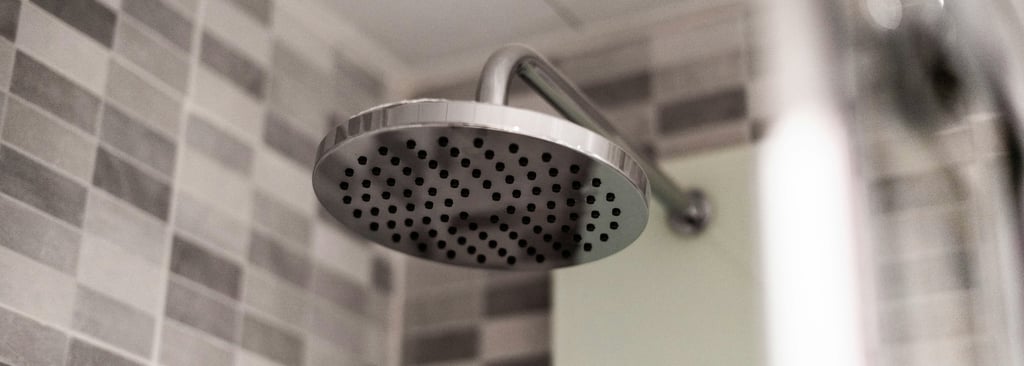

Photo by kevin Baquerizo on Unsplash
Clothing
Did you know that even certain types of clothing can be toxic? I've got to admit I never even thought about it, until recently. It's no surprise that we wear cheaply made clothes, and that they're only so cheap to make because of the inexpensive chemical processes used to produce them. What exactly is this costing our health?
Polyester
Polyester is easily one of the most common materials that our clothes are made of nowadays. With additional chemical treatments, it can provide some useful characteristics, such as water-resistance, moisture-wicking capabilities, and the ability to easily absorb dyes. The sad truth is, polyester (and recycled polyester which is made from recycled plastics) are causing asthma, allergic skin reactions, liver problems, hormone disruption, and even infertility. Everyday exposure to the chemicals and the polyester in our clothes can really bog down our bodies' hormones and skin over the years.
A Great Alternative
Shop for 100% cotton wherever you can! It is safe, plant-based, and hypoallergenic, which makes it perfect for sensitive skin. Start by switching to cotton undergarments, and then continue swapping from there!

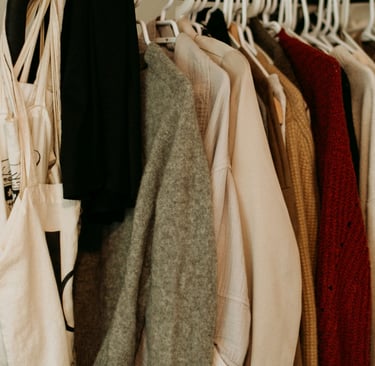
Photo by Priscilla Du Preez 🇨🇦 on Unsplash
Detergent & Dryer Sheets
Let's go to the laundry room. Believe it or not, those scentsy dryer sheets that make your laundry smell so fresh can also contain toxic chemicals and fragrances. Detergents contain dyes, surfactants, and other harsh chemicals that can irritate the skin. If you struggle with eczema or any other chronic skin conditions, swapping out your traditional laundry items may be a great place to start.
I'm really not allergic to many things at all, but when my husband and I first got married, we were using dryer sheets. Before that, I hadn't used dryer sheets in a long time, and even then, I used them far and few between. Not long afterward, I started getting unexplained itchiness on my skin. It was hard to tell where it was coming from at first, especially because we were also trying to eat healthier at the same time. One day, I went to the laundry building in our complex and had forgotten the dryer sheets (and it was 110 degrees outside and I was not going back for them), and I noticed that I didn't itch that week.
That's how I knew that the Bounce had to bounce! I didn't realize it, but one of the ingredients, called by the lovely name of dipalmitoylethyl hydroxyethylmonium methosulfate, is associated with causing endocrine disruption, reproductive damage, allergic dermatitis, and more. Once I stopped using them, all the itching went away for good!
A Great Alternative
For detergent: A mix of castile soap, washing soda, borax, and water make for a great laundry soap! I love Centennial Roots' recipe because it is gentle on skin, makes so much soap for cents per load, and it is quick and easy to whip up. All you need is a big pot, a 5-gallon bucket, and a big old spoon. Try it out!
For softener: spray your vinegar and water solution onto a clean face towel or dish towel, and just add it to your dryer with your clothes! If you prefer that your clothes have a scent, drop in an essential oil like lavender to add that clean, fresh smell. These are inexpensive, natural ways to reduce static, soften your fabrics, and dry things more efficiently. Essential oils also come with some health benefits; for example, lavender has a calming effect, which is essential for laundry day!


Photo by Point3D Commercial Imaging Ltd. on Unsplash
Wrap-up
I'd like to end by saying that it's easy to think that these side effects are inconsequential. And usually, they can be pretty minor. But think about it: if you and I are using multiple toxic products every single day, over time that effect is going to compound on the body and can end up causing some serious health issues, even if you may not feel unhealthy right now (or maybe you do, and it may be time to try making a swap).
If you have any weird, unexplained symptoms or health issues, I'd encourage you to dig deeper! Take a good look under your sink and see what you're exposing your body to, and whether or not it is worth switching out with something better. You can take responsibility for your body and household by asking yourself, "How will this affect me?" and screen what comes into your home. You'll be a good steward of God's gift of life, and your body will thank you!
Some of these swaps may cost you a little recipe-making time if you decide to do them, but when you find that you can clean your house with what might already be under your sink, you will see the great benefit in taking one more step in the direction of detoxing your home!
Try them out for yourself!
